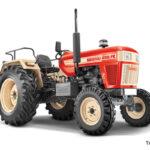When designing and implementing full height turnstiles as part of an access control system, it is crucial to consider the accessibility requirements set forth by the Americans with Disabilities Act (ADA). ADA compliance ensures that individuals with disabilities have equal access to public facilities. This article explores the accessibility considerations that should be taken into account when designing full height turnstiles, including gate width, gate opening controls, accessible routes, and integration with adaptive technologies.
1. Gate Width:
Meeting Minimum Requirements ADA guidelines require passage openings to be at least 32 inches wide to accommodate wheelchair users. When designing full height turnstiles, it is essential to ensure that the gate width meets these minimum requirements. By providing wider access, individuals with mobility impairments can easily navigate through and independently operate the turnstiles.
2. Gate Opening Controls:
Ease of Use To ensure accessibility, full height turnstiles should be equipped with gate opening controls that are easy to operate for individuals with disabilities. This could include push buttons, proximity sensors, or touchless technology that allows users to trigger the gate opening without physical contact. Placing these controls at an appropriate height, within reach of wheelchair users, is also essential.
3. Accessible Routes:
Unobstructed Pathways ADA compliance requires that full height turnstiles are integrated into an accessible route, enabling people with disabilities to enter and exit the facility easily. Accessible routes should be free from any obstructions that could hinder wheelchair users, such as steps, uneven surfaces, or narrow passages. Careful planning should be done to ensure that the pathways leading to and from full height turnstiles are accessible and meet the required standards.
4. Integration with Adaptive Technologies:
Assisting Users with Disabilities To Enhance accessibility, full height turnstiles can be integrated with adaptive technologies that assist users with disabilities. For example, turnstiles can be equipped with audio prompts or tactile feedback to provide guidance for visually impaired individuals. RFID card readers or credential validation systems can also be integrated with assistive devices, such as braille readers or touchpads, to ensure that users with diverse needs can easily navigate the turnstiles.
5. Safety Considerations:
Emergency Egress ADA compliance in full height turnstile designs must account for emergency egress. In the event of an emergency, individuals with disabilities should be able to evacuate the facility quickly and safely. Designing full height turnstiles with emergency release mechanisms, which allow the gates to be fully opened or disabled during emergency situations, is critical. This ensures that individuals can exit without any barriers, regardless of their mobility limitations.
6. Ongoing Maintenance:
Regular Inspections and Repairs Maintaining ADA compliance in full height turnstile designs requires ongoing inspections and repairs. Regularly assessing the functionality of gate opening controls, verifying accessible routes are unobstructed, and ensuring the integration of adaptive technologies remain in good working order is essential. It is crucial to address any issues promptly to prevent access barriers for individuals with disabilities.
Conclusion:
When designing and implementing full height turnstiles, adherence to ADA regulations is vital to ensure accessibility for individuals with disabilities. Considering factors such as gate width, gate opening controls, accessible routes, integration with adaptive technologies, safety egress, and ongoing maintenance helps guarantee ADA compliance. By incorporating these accessibility considerations, facilities can provide equal access and ensure a seamless experience for all users, regardless of their physical abilities. It is recommended to consult with accessibility experts and ADA compliance guidelines during the design and implementation process to create an inclusive and accessible environment for everyone.



